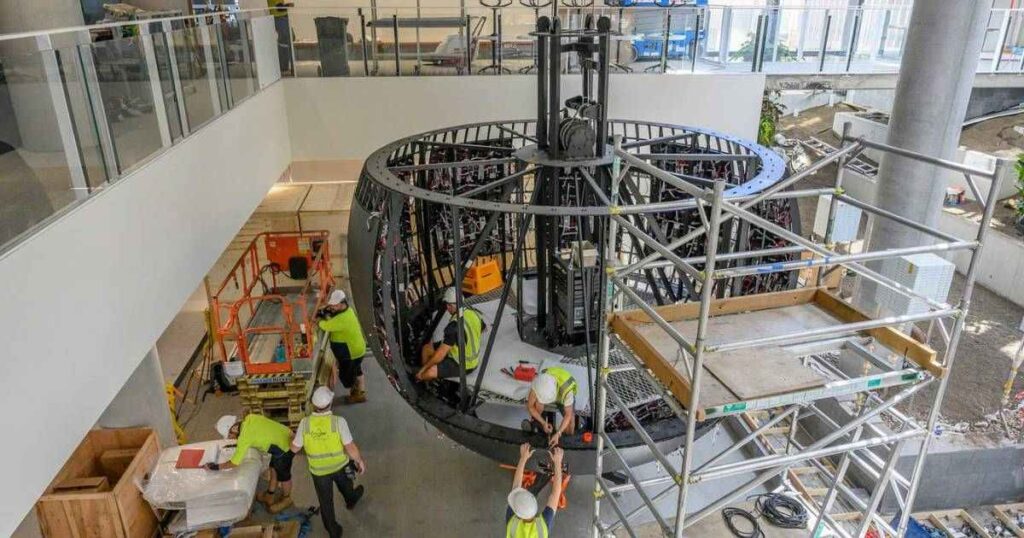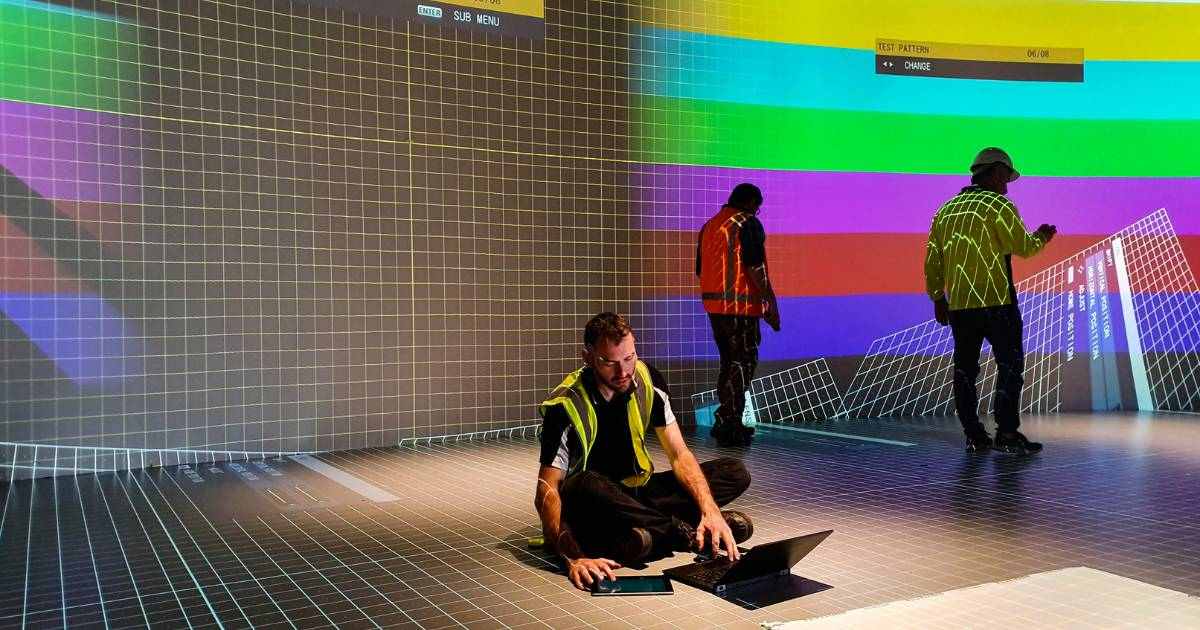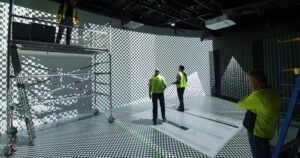In today’s digital age, the audio-visual (AV) industry has become a melting pot of advanced technologies. This industry has not only transformed our personal entertainment experiences. But it has also become integral to various sectors such as education, healthcare, hospitality and corporate environments.
From giant LED displays that adorn city skylines to mind-bending augmented reality (AR) applications, AV technology is shaping the way we learn, communicate and interact with the world around us.
But how well do you truly know this evolving industry? Let’s dive deeper into the realm of AV.
What is AV

The AV industry is involved in the design, integration, installation and maintenance of audio-visual systems. These systems combine audio, video, lighting and control technologies to create immersive experiences in various environments.
At its core, an AV system is designed to facilitate effective communication. For example, when you’re delivering a presentation in a huge auditorium, not all members of the audience will be able to see and hear you clearly from the stage. This is where AV technology steps in to amplify your message. A sound system ensures the speaker’s voice reaches everyone, while lighting helps draw the audience’s eyes towards the subject.
It has also revolutionised how we consume media. From high-definition televisions to streaming platforms and virtual reality experiences, it has brought captivating entertainment directly into our homes. We can now enjoy movies, TV shows and music with enhanced visual and audio fidelity with just a few clicks.
The Different Areas and Specialities in the AV Industry

Live events
AV technology has transformed the way we experience live events. Concerts, conferences and even sports events are brought to life with high-quality sound systems, impressive visuals and lighting effects.
Audio-visual professionals work behind the scenes, using equipment like projectors, lighting systems, and other software to create a one-of-a-kind experience for the audience. They carefully design and execute the technical aspects of the event, ensuring that the sound, visuals and lighting work in harmony.
Corporate
In the corporate world, effective communication and collaboration are essential for success. And AV technology has emerged as a crucial tool in enhancing these aspects.
Video conferencing systems are one of the key applications of AV technology in the corporate setting. With features like screen sharing and document collaboration, teams can easily share and discuss important information, improving productivity and efficiency in remote meetings. It also helps facilitate virtual presentations, training sessions and webinars.
Education and training
Thanks to AV technology, traditional classrooms have evolved into dynamic learning environments. They are now equipped with interactive whiteboards, projectors and other learning tools that enhance students’ learning experiences.
With AV tools at their disposal, educators can also create multimedia-rich lessons that cater to different learning styles. They can use videos, simulations and virtual reality experiences to bring abstract concepts to life and connect them to practical, real-life scenarios.
Broadcast and media
Television production rely heavily on AV technology to capture, edit and deliver high-quality content to viewers. From news broadcasts to entertainment shows, AV tools such as cameras, lighting equipment, sound systems and video switchers are used to ensure optimal visual and audio quality.
The AV industry also plays a pivotal role in distributing content across various channels. Broadcast shows use AV transmission technologies such as satellite and cable systems to deliver content to viewers’ homes. Cinema projection systems, on the other hand, are equipped with high-resolution projectors and sound systems designed to captivate audiences.
Healthcare
With AV technology, healthcare professionals can now share data quickly and easily. Using tools like video conferencing, healthcare providers can conduct remote consultations with patients, enabling them to deliver care from a distance. This is particularly beneficial in rural or remote regions where access to medical services may be limited.
Healthcare educators also use AV tools to provide interactive training sessions and simulations to students and professionals. This aids in enriching the knowledge and skills of healthcare workers, ultimately leading to improved patient care.
Exhibitions
Museums now leverage AV technology to engage visitors on a deeper level. Visitors can immerse themselves in virtual worlds through virtual reality (VR) and augmented reality (AR), creating a more interactive and educational experience.
It also enables the integration of multimedia elements like audio guides, video presentations, touchscreens and interactive displays into exhibitions. These multimedia installations provide visitors with additional layers of information, context and storytelling.
The Global Growth and Evolution of the AV Industry

The AV industry has undergone a remarkable evolution in recent years. In fact, according to Data Bridge Market Research, the global AV market is expected to reach a value of USD 7.92 billion by 2029; with employment rate only rising every year. And this is all thanks to the non-stop innovations in display technologies, audio systems and wireless connectivities.
The shift from analog to digital systems also enables higher-quality audio and video production and playback. While increased connectivity and cloud-based solutions have allowed the seamless integration of AV devices and improved network-based content distribution.
The Future of AV: AV Trends to Look for in 2023 and Beyond

As the AV industry continues to grow, it is expected to continue to shape the future of communication, entertainment and user experiences. But what else can we expect from the future of AV?
Here are some AV trends you need to know in 2023 and beyond.
AI Integration
Artificial intelligence (AI) powered automation, voice assistants and smart systems will enhance AV technology further, making it more intuitive, personalised and automated. This will improve user experiences, streamline operations and unlock new possibilities for innovation and creativity.
Immersive technologies
Virtual reality, augmented reality, mixed reality and extended reality experiences will continue to evolve and offer new exciting opportunities for us. These technologies will help transform how we work, learn and play. With the emergence of the metaverse, the potential for interconnected virtual experiences is also set to reshape the future of human interaction and digital ecosystems.
5G and IoT
The future of AV technology will be significantly influenced by two transformative technologies: 5G and the Internet of Things (IoT). These advancements in connectivity will enable seamless integration and communication between AV devices, opening up a world of possibilities for interconnected and intelligent solutions.
Audio-visual technology is an ever-evolving industry that plays a pivotal role in how we interact with the world. As the sector continues to expand globally, now could be your chance to jump aboard.
So, are you ready to start your career in the AV industry?
Be an Institute of AV Technology (IAVT) apprentice today and explore your future in the AV industry. Join our upcoming open day to learn more.





No comment yet, add your voice below!